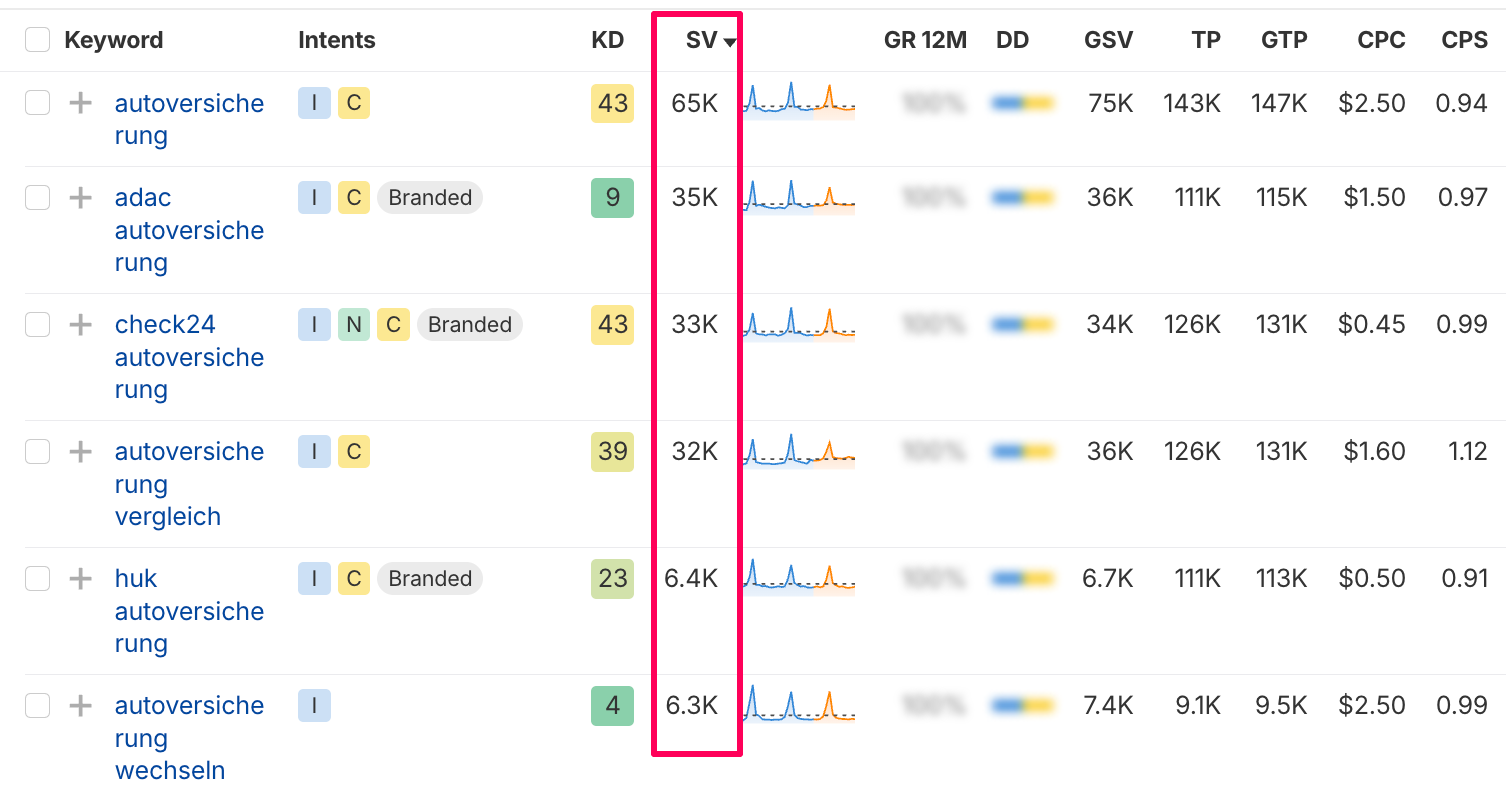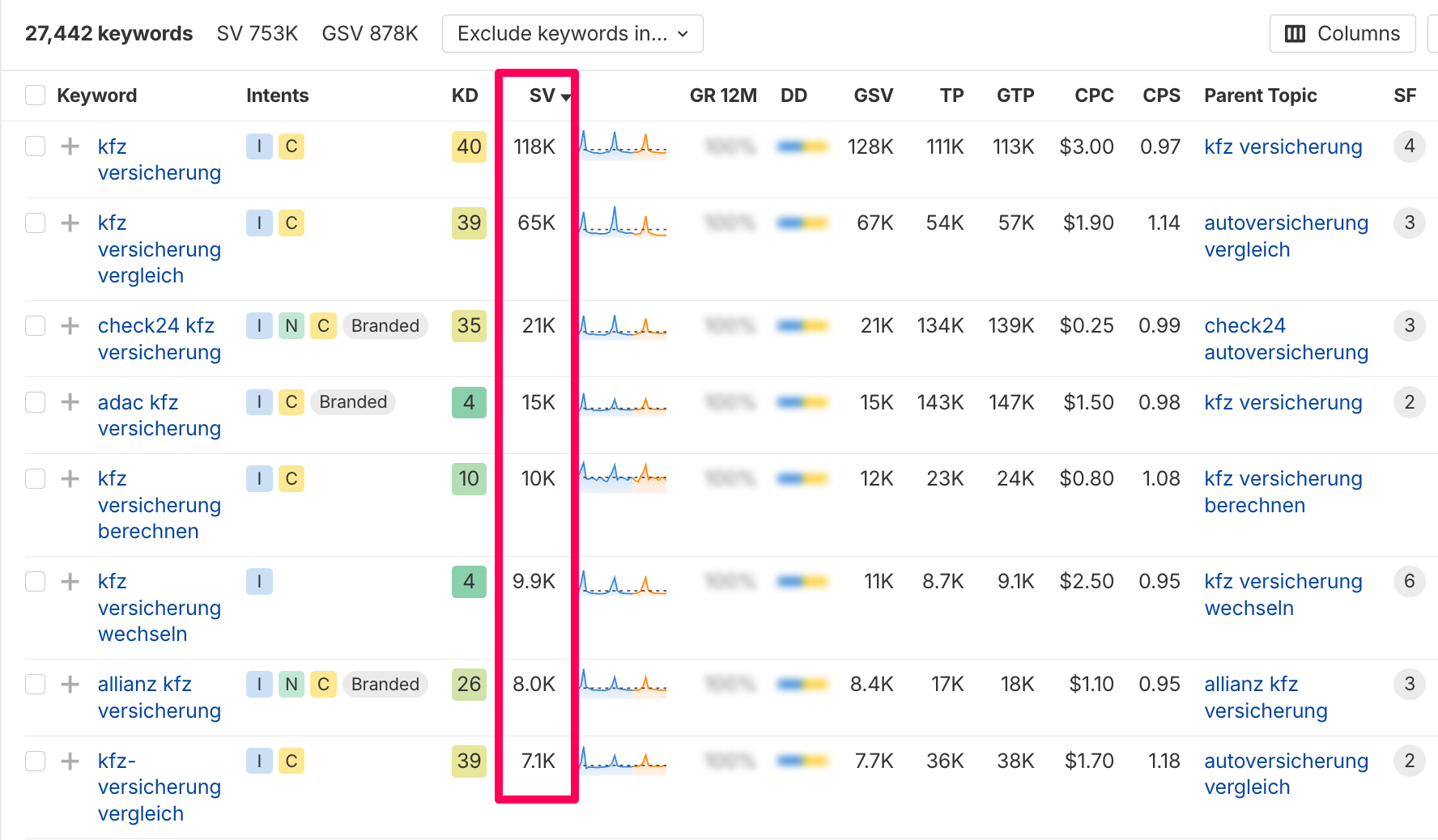Backlinks you don’t have to chase
Content that feels “home‑grown” gets shared by regional blogs, forums, and news sites without a formal outreach push.
People link to what resonates with them and their audience. Each organic mention strengthens your authority in that market. That’s one of the key ways to prevent competitors from overtaking you.
Cheaper clicks on paid campaigns
Ad platforms reward landing pages that match search intent. When your transcreated copy reflects local language and culture, your relevance scores rise. Higher scores mean lower cost‑per‑click and more room in your budget to test fresh keywords or markets. That’s all thanks to SEO transcreation and the work you already did for organic traffic.
You don’t need to transcreate everything
Time and budget aren’t infinite. You’ll get far better returns by going deep on the pages and elements that drive traffic, leads, or trust, and going lighter everywhere else.
Use the filters below to decide where full SEO transcreation is worth it and where a solid translation (with light tweaks) will do.
Start with your money pages
Product, solution, pricing, and signup pages sit closest to revenue. Small wording shifts here change conversions, so they deserve full research, native keywords, currency, and locally tuned CTAs.
If a market has any meaningful search volume or pipeline potential, transcreate these first. They anchor the rest of your localized presence and signal you’re open for business.
Pages where intent clearly differs
Some markets research more, compare longer, or need regulatory proof before they act. If local buyers expect feature grids, case studies, or compliance notes you don’t show, a straight translation will underperform.
Rebuild structure, headings, and calls to action to match how that market buys. When the flow lines up with local behavior, rankings and conversions both improve.
Evergreen guides that earn authority
Pillar guides, how‑tos, and benchmark pieces collect links, shares, and long‑tail traffic over time. When these are deeply localized with local data, examples, and terminology, they become reference pieces in the new market.
Because they attract citations, they lift domain authority for all your local pages. If you can only fully transcreate a few long‑form assets, pick the evergreen ones that others are likely to quote.
Conversion-critical UX and onboarding flows
In‑app copy, onboarding emails, and help content shown during signup or activation often decide whether new users stick. If a workflow, tax format, or payment step differs locally, literal copy confuses and stalls adoption.
Transcreate short strings, tooltips, and screenshots so the flow mirrors local reality (currency, invoice types, integrations). This work is small in word count but huge in downstream retention.
Proof pages for highly regulated markets
Security, compliance, support SLAs, and data‑handling pages build or break trust in places with stricter rules. Think Germany, Japan, or Mexico’s tax requirements. Accuracy matters, but so does framing the proof in familiar terms.
Local certifications, regulatory references, and region‑specific contact options show you’re legit. Here you may do a hybrid: legally precise translation plus targeted transcreated sections that explain “what this means for you” to your prospective customers.
Translation might be enough for low-stakes content
Old blog posts, seasonal promos that have passed, and deep archive knowledge-based articles rarely justify full transcreation. Translate for basic coverage, fix obvious terminology and currency issues if needed, and move on.
You can link these lighter pages toward your fully transcreated hubs so any residual traffic still finds your best local content. You can always upgrade a page later if demand grows.
How to decide fast
Not sure when SEO transcreation’s worth it?
Score pages on three things:
- Impact (revenue or leads)
- Search opportunity (volume + competition gap)
- Intent mismatch risk (how different the local journey is)
Is your score showing high‑high‑high? Then you need full transcreation. Seeing mixed scores? Light localization will do
You should commit to revisiting the list quarterly. Markets shift, competitors move, and what didn’t merit investment last year may be a clear win now. Updating your priorities keeps the budget focused where it pays off.
Transcreation case studies
You’ve got the playbook, now see how teams put it to work. These brands went beyond string translation and tied language, intent, and operations together. This is how they positively impacted traffic, time‑to‑launch, and customer love.
The examples below come from Lokalise customer stories. They showcase how you can transcreate public, search‑facing content for better organic visibility.
ActiveCampaign launches localized content in days, not weeks

ActiveCampaign’s growth team was stuck with machine‑translated strings and no quality layer. After centralizing site copy, email sequences, and help content in Lokalise, everything got easier.
They could brief vendors with context, segment translation memories by content type, and publish in as little as two days.
The payoff: Their Spanish blog grew traffic after they began optimizing and localizing for that market (75% YoY), and localized help content saw heavier use as global customers leaned on it (111% increase over two years).
Takeaway for you: Tie language work to demand‑gen metrics (traffic, pipeline) so SEO transcreation proves its worth fast.
Popsa scales marketing and SEO content across 14 languages

Popsa’s marketing team inherited messy spreadsheets and copy‑paste chaos. By wiring Storyblok (CMS) and Figma into Lokalise, they built a single source of truth. This made it easy to feed paid scripts, CRM emails, and website SEO content into translation workflows with brand assets attached.
The payoff: Automation plus translation memory cut turnaround times roughly 75% and lowered costs ~20%, while leadership complaints about awkward translations all but disappeared.
Takeaway for you: When SEO pages, lifecycle emails, and ad creative draw from one vetted phrase bank, your transcreated keywords stay consistent across the entire funnel.
CoachHub launches ~20 languages in less than a year

CoachHub’s rapid global expansion left teams juggling Word docs, agencies, and version confusion. Not exactly the setup for search‑friendly, trust‑building content.
However, when they integrated Storyblok with Lokalise, they centralized articles, course material, and visuals so linguists and reviewers could work in context and reuse approved language.
The payoff: Languages doubled to ~20, operational drag dropped (the team reclaimed ~25% of their time), and localized content supported higher NPS and customer satisfaction across 90 countries.
Your takeaway: if content depth is your goal, transcreate your evergreen and education assets in a system that preserves terminology and context.
Behind the scenes: Who actually does SEO transcreation right?
Most companies with international presence translate content. But the ones who win treat global search as a team sport across SEO, localization, content, dev, and in‑market marketing.
Winning teams align language with how people search, structure sites so the right version shows, and keep the loop tight between data and copy. Let’s take a closer look at the team structure and how they operate.
Centralized intelligence + great local knowledge
High performers have a centralized hub that owns strategy, tooling, and measurement, and then they plug in local experts for language, intent, and cultural fit. The center sets processes (briefs, QA, metrics) and enforces technical standards like hreflang and site structure.
Local marketers, copy pros, and subject-matter experts adapt messaging, keywords, and proof points so each market page feels native. Tight communication between headquarters and in‑country teams keeps brand and search goals aligned, and launches become faster, too.
International SEO lead
This is your conductor. They own market selection, organic growth targets, and the cross‑functional roadmap (content, tech, links, measurement). They don’t write every word, but they make sure the right work happens in the right order.
They also figure out the tradeoffs. For example, they decide which markets get full transcreation, how to split budget between new language launches and updating legacy pages, when to push dev for structural fixes.











